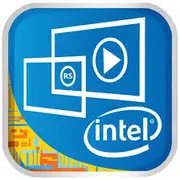Intel Core M-5Y31

Intel Core M-5Y31 in 2025: An Outdated Chip for Narrow Tasks
Broadwell Architecture, 14 nm, TDP 4.5 W—Is It Worth Buying a Laptop with Such a Processor?
Architecture and Technology Process: Compactness at the Expense of Power
The Intel Core M-5Y31 processor, released in 2015, is based on the Broadwell microarchitecture and 14-nm technology process. It is a dual-core chip with Hyper-Threading support (4 threads) and a base frequency of 0.9 GHz. In turbo mode, the frequency can rise to 2.4 GHz, but only briefly due to the limited TDP.
Key Features:
- Graphics: Integrated iGPU Intel HD Graphics 5300 with 24 execution units and a frequency of up to 850 MHz. Supports 4K output via DisplayPort, but struggles with modern games.
- Cache: 4 MB L3 cache—modest even for office tasks in 2025.
The 14-nm technology process looks archaic in 2025 compared to 5-nm (Apple M2) or 3-nm (AMD Zen 5) chips. However, at the time, it allowed the creation of ultra-thin laptops without active cooling.
Power Consumption and TDP: Quiet Operation, but Limitations
The 4.5 W TDP is the main advantage of the Core M-5Y31. Thanks to its low thermal output, the chip is used in passively cooled devices, such as:
- Convertibles (e.g., Lenovo Yoga 3 Pro);
- Ultrabooks (Dell XPS 13 2015).
However, in 2025, similar TDPs are demonstrated by more powerful processors, such as the Intel Alder Lake-Y (7 W) or AMD Ryzen 3 7320U (8 W).
Performance: Only Basic Tasks
According to Geekbench 6, the chip scores 666 points in single-threaded and 1244 in multi-threaded tests. For comparison, the budget Intel N100 (2023) shows 1100/3300 points.
Real-World Scenarios:
- Office Work: Word, Excel, browser with 5-10 tabs—acceptable, but lag may occur when running Zoom simultaneously.
- Multimedia: Watching Full HD video (4K with stuttering), light editing in Shotcut—only short clips.
- Gaming: Minecraft on low settings (25-30 FPS), Stardew Valley—stable. Modern AAA titles are inaccessible.
Turbo Mode: Frequency up to 2.4 GHz is activated for 10-20 seconds, after which throttling begins. In games, this leads to sharp drops in FPS.
Use Cases: Who is the Chip Relevant for in 2025?
The Core M-5Y31 is suitable only for two categories of users:
1. Students—for note-taking, web browsing, and Netflix.
2. Secondary Devices—a compact laptop for travel.
Not suitable for:
- Photo/video editing (even in Lightroom—long processing);
- Programming (Android Studio, Docker);
- Multitasking (simultaneous work with 10+ tabs and apps).
Battery Life: Up to 8 Hours, But There Are Nuances
Thanks to the 4.5 W TDP, laptops with Core M-5Y31 in 2025 can operate for 6-8 hours under:
- Screen brightness of 50%;
- Power-saving mode;
- Activity: browser, documents, music.
Energy Efficiency Technologies:
- Intel SpeedStep—dynamic frequency scaling;
- C-States—turning off unused cores.
However, modern processors (e.g., Apple M1) provide double the performance at similar battery life.
Comparison with Competitors: Weak Even Against Budget Chips
- AMD Ryzen 3 7320U (4 cores/8 threads, 8 W): +80% in multi-threading, DDR5 support.
- Apple M1 (8 cores, 10 W): 4 times faster in rendering, up to 15 hours of battery life.
- Intel N100 (4 cores, 6 W): twice the performance, laptops from $250.
Conclusion: The Core M-5Y31 falls short even against the cheapest modern chips.
Pros and Cons
Strengths:
- Passive cooling—absolute silence;
- Ultra-compact device sizes (thickness starting from 12 mm);
- Low price—laptops starting from $200 (new models in 2025, if any remain).
Weaknesses:
- Low performance for modern OS (Windows 11 demands resources);
- Throttling under prolonged loads;
- Lack of support for modern standards (Wi-Fi 6, PCIe 4.0).
Laptop Choice Recommendations
If you are still considering a device with Core M-5Y31 in 2025, pay attention to:
1. Type of Storage: Only SSD (NVMe preferred over SATA).
2. RAM: Minimum of 8 GB (4 GB is unacceptable for Windows 11).
3. Screen: Full HD IPS—HD (1366x768) is outdated even for office use in 2025.
Example 2025 Models (if available):
- Chuwi Minibook X—8 GB/256 GB, $220;
- Teclast F6 Pro—12-inch screen, 8 GB/512 GB, $270.
Important! For $300-400, you can buy a laptop with Intel N100 or AMD Ryzen 3 7320U—they will last longer.
Final Conclusion: Who is the Core M-5Y31 Suitable for in 2025?
This processor is a relic of the past. It should only be considered if:
- You need a super-budget laptop for text and YouTube;
- Absolute silence is critically important (e.g., for recording lectures).
Key Benefits: affordability and portability. However, even in 2025, the market offers more balanced options. Think twice before buying a device with Core M-5Y31—it's likely better to pay extra for a modern chip.
If you find a laptop with this processor priced below $200 and are willing to accept the limitations—it may serve as a temporary solution. But for long-term use, look for alternatives.
Basic
CPU Specifications
Memory Specifications
GPU Specifications
Miscellaneous
Benchmarks
Compared to Other CPU
Share in social media
Or Link To Us
<a href="https://cputronic.com/cpu/intel-core-m-5y31" target="_blank">Intel Core M-5Y31</a>